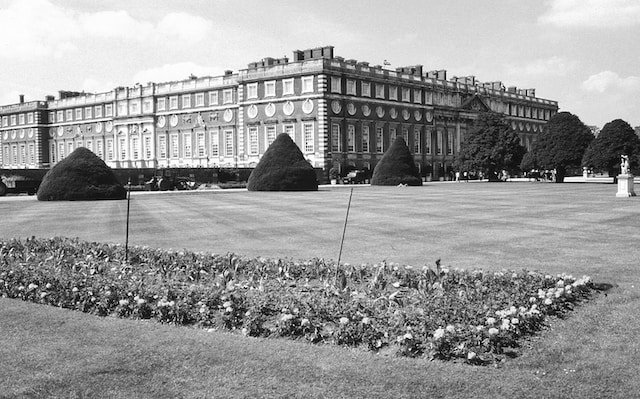Patriots, Loyalists, and Neutrals
Introduction:
As the winds of revolution blew across the 13 American colonies, not every individual felt the same gusts of change. In a land poised on the precipice of rebellion, citizens were divided into three primary camps: Patriots, Loyalists, and Neutrals. Each group had its own beliefs, motivations, and visions for the future of the colonies.
Patriots: Advocates of Independence
Definition and Background:
Patriots were colonial residents who ardently believed that the colonies should break away from British control. These individuals deemed British laws, particularly the taxes imposed without representation, as oppressive and unjust.
Key Figures:
- Samuel Adams: An influential political philosopher and leader who was instrumental in gathering support for the revolutionary cause.
- Paul Revere: Known for his midnight ride, warning the residents of Massachusetts about the impending British invasion.
- George Washington: A military leader and the first president of the newly formed United States.
Reasons for Their Stance:
Patriots wanted to break free from perceived British tyranny. They were determined to ensure local governance, create a democratic system, and protect the colonies’ rights.
Impact and Legacy:
The fervor of the Patriots led to key revolutionary events such as the Boston Tea Party and the drafting of the Declaration of Independence.
Loyalists: Defenders of the Crown
Definition and Background:
Loyalists were the colonists who remained loyal to the British monarchy. They either benefited from the existing British colonial system or feared the uncertainties and chaos of a revolution.
Key Figures:
- Joseph Galloway: A political leader who proposed a plan to keep the colonies under British rule, which was rejected by the Continental Congress.
- William Franklin: Son of Benjamin Franklin and a staunch loyalist who was eventually imprisoned due to his loyalty to Britain.
Reasons for Their Stance:
Many Loyalists had economic ties to Britain, while others believed in the legitimacy of the British government. Some were skeptical about the feasibility of a successful revolution and doubted the colonies’ ability to self-govern.
Impact and Legacy:
Loyalists faced social ostracization and sometimes violence from Patriots. Post-revolution, many migrated to Canada, Britain, or the British West Indies to escape the newly formed nation’s wrath.
Neutrals: On the Fence of Revolution
Definition and Background:
Not everyone in the colonies was passionate about the revolutionary cause or the British crown. Many chose, either due to indifference or deliberate decision, to remain neutral during the war.
Key Figures:
- Many neutrals were not as well-documented in history due to their lack of direct involvement in the conflict. However, certain Quaker groups, known for their pacifist beliefs, often chose a neutral stance.
Reasons for Their Stance:
Reasons varied. Some aimed to maintain their business ties on both sides. Others, especially in areas where the fighting was fiercest, simply wished to survive, prioritizing their families’ safety over political leanings.
Impact and Legacy:
Neutrals played a crucial role, acting as intermediaries at times and providing safe havens for those exhausted by the ongoing conflict. However, they also faced criticism from both Patriots and Loyalists for not taking a side.
The Broader Impact:
The post-revolutionary period saw significant changes for each group:
- Patriots: Their efforts culminated in the formation of a new nation with a unique constitution. The sacrifices they made became a cornerstone of American national identity.
- Loyalists: Post-war, many found it untenable to remain in the U.S. Large numbers migrated to Canada, Britain, or other parts of the British Empire. Their experiences contributed to the shaping of Canadian identity, especially in provinces like Nova Scotia and New Brunswick.
- Neutrals: Their fate varied. While some integrated seamlessly into the new American society, others, especially those who had been coerced into taking sides during the war, faced challenges in the post-war period.
In Retrospect:
The American Revolution was not a monolithic struggle but a complex interplay of ideologies, loyalties, and personal decisions. Delving deeper into the perspectives of Patriots, Loyalists, and Neutrals allows us to appreciate the intricacies and personal struggles that defined this pivotal period in history.
Post-War Realignments:
The end of the war didn’t mean the end of tensions.
- Patriots faced the colossal task of nation-building. Their vision, forged in the crucible of war, had to stand the test of peace.
- Loyalists had to start anew, with many carrying the scars and memories of persecution.
- Neutrals were the wild cards, their loyalties questioned and roles redefined in the newly formed nation.
Conclusion:
The American Revolution wasn’t a simple tale of “colonists versus the British.” The tapestry of beliefs, hopes, and fears was intricately woven with Patriots advocating for change, Loyalists clinging to the known, and Neutrals caught in the storm’s eye. Understanding these diverse perspectives provides a richer, more nuanced view of the revolution and the forging of a nation.
The American Revolution wasn’t just a battle of armies; it was a battle of ideologies, loyalties, and identities. The complexities of this era remind us that history isn’t black and white. It’s a vibrant tapestry woven with the threads of human choices, sacrifices, and aspirations. The story of Patriots, Loyalists, and Neutrals enriches our understanding of the Revolution, making it not just a tale of leaders and battles but of everyday people and their indomitable spirits.








